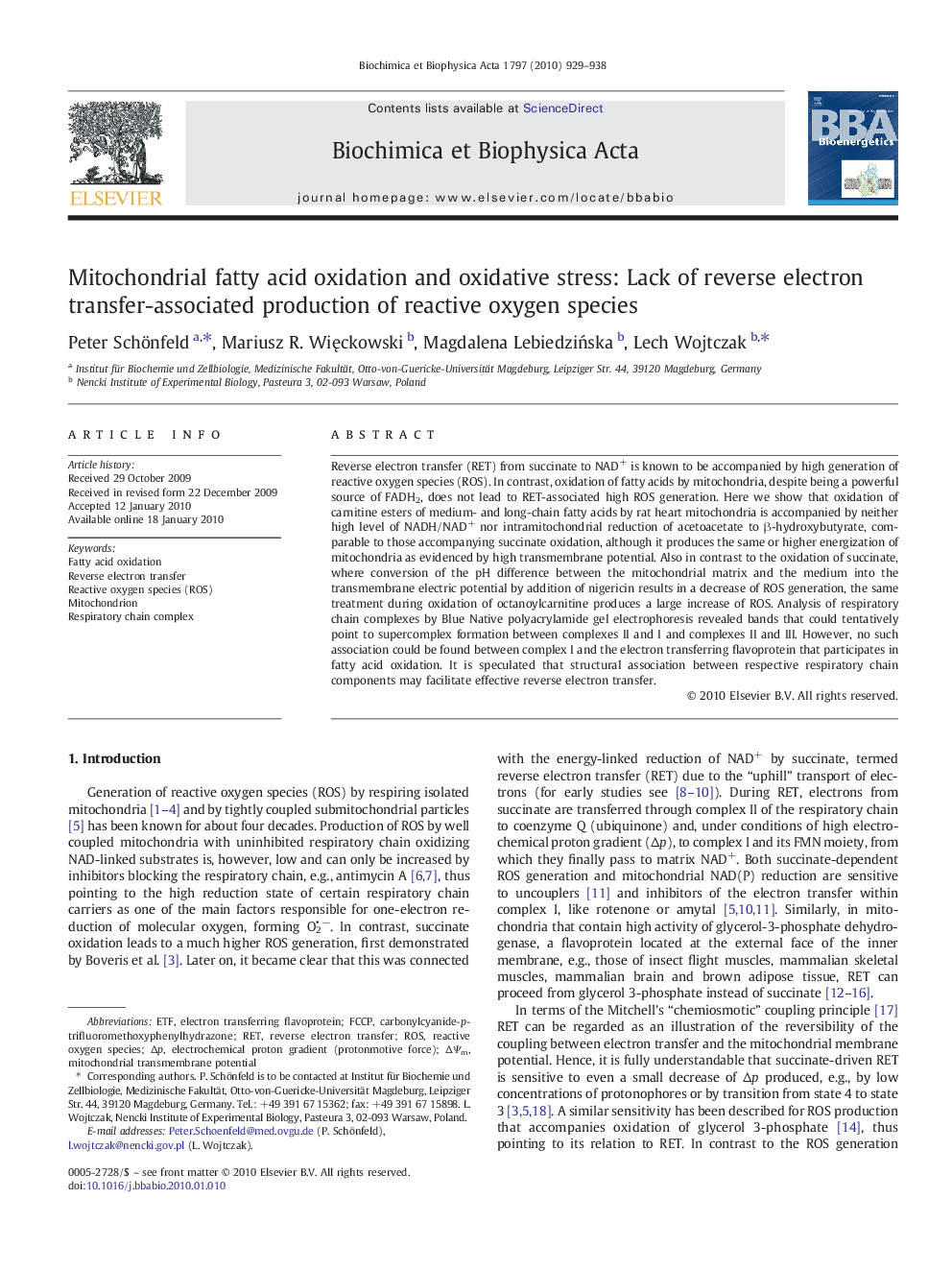| Article ID | Journal | Published Year | Pages | File Type |
|---|---|---|---|---|
| 8298932 | Biochimica et Biophysica Acta (BBA) - Bioenergetics | 2010 | 10 Pages |
Abstract
Reverse electron transfer (RET) from succinate to NAD+ is known to be accompanied by high generation of reactive oxygen species (ROS). In contrast, oxidation of fatty acids by mitochondria, despite being a powerful source of FADH2, does not lead to RET-associated high ROS generation. Here we show that oxidation of carnitine esters of medium- and long-chain fatty acids by rat heart mitochondria is accompanied by neither high level of NADH/NAD+ nor intramitochondrial reduction of acetoacetate to β-hydroxybutyrate, comparable to those accompanying succinate oxidation, although it produces the same or higher energization of mitochondria as evidenced by high transmembrane potential. Also in contrast to the oxidation of succinate, where conversion of the pH difference between the mitochondrial matrix and the medium into the transmembrane electric potential by addition of nigericin results in a decrease of ROS generation, the same treatment during oxidation of octanoylcarnitine produces a large increase of ROS. Analysis of respiratory chain complexes by Blue Native polyacrylamide gel electrophoresis revealed bands that could tentatively point to supercomplex formation between complexes II and I and complexes II and III. However, no such association could be found between complex I and the electron transferring flavoprotein that participates in fatty acid oxidation. It is speculated that structural association between respective respiratory chain components may facilitate effective reverse electron transfer.
Keywords
Related Topics
Life Sciences
Agricultural and Biological Sciences
Plant Science
Authors
Peter Schönfeld, Mariusz R. WiÄckowski, Magdalena LebiedziÅska, Lech Wojtczak,
